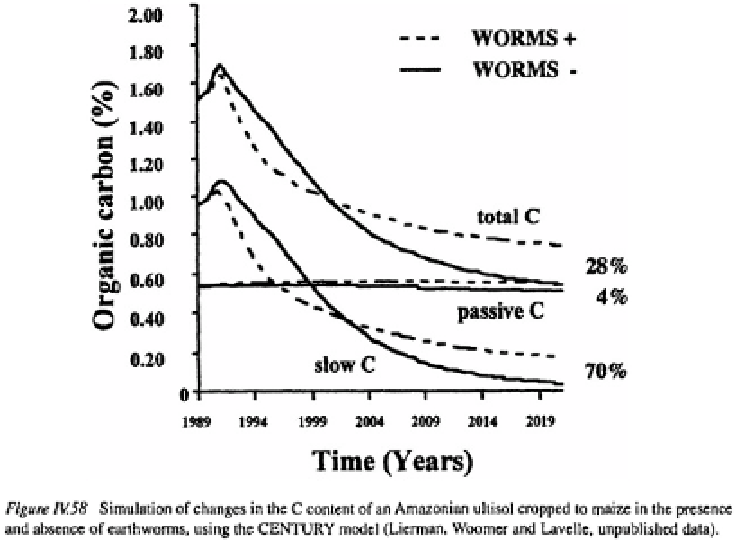Agriculture Reference
In-Depth Information
exercise, the predicted effect of SOM protection in casts was for positive long term
effects on SOM contents, especially in the slow pool (Martin and Parton, unpublished
data in Lavelle
et al
., 1998). In the second exercise, modeling was used to examine the
consequences of surface litter incorporation below surface casts of
Pontoscolex corethrurus
,
with the effects of bioturbation simulated as a gentle cultivation. The model
adequately described the decline in organic matter concentration observed in a three
year-experiment of a low-input agricultural system at Yurimaguas (Peruvian Amazonia),
with higher losses in soils inoculated with earthworms than uninoculated soil. However,
after some 12 years, the effect was reversed and predicted C stocks were 28 % greater
after 30 years in systems where earthworms were present (Lierman and Woomer,
unpublished data) (Figure IV.61).
Release of nutrients
Increase of concentrations in casts.
The passage of SOM through the earthworm gut
leads to the release of significant amounts of assimilable nitrogen and phosphorus.
Nitrogen is secreted by the nephridia as ammonium into the gut (when nephridia open
in the gut, endonephridia), or at the surface of the body (ectonephridia). Part of the
ammonium found in casts may also result from microbial mineralisation before ingestion,
or inside the gut. Under standardised laboratory conditions (T = 27 °C, soil previously
sieved to less than 2 mm and moistened to field capacity), the amounts of ammonium
released differ between soils which suggests that part may result from the stimulation
of microbial activity within the gut (Lavelle
et al
., 1992b) (Table IV.18).

